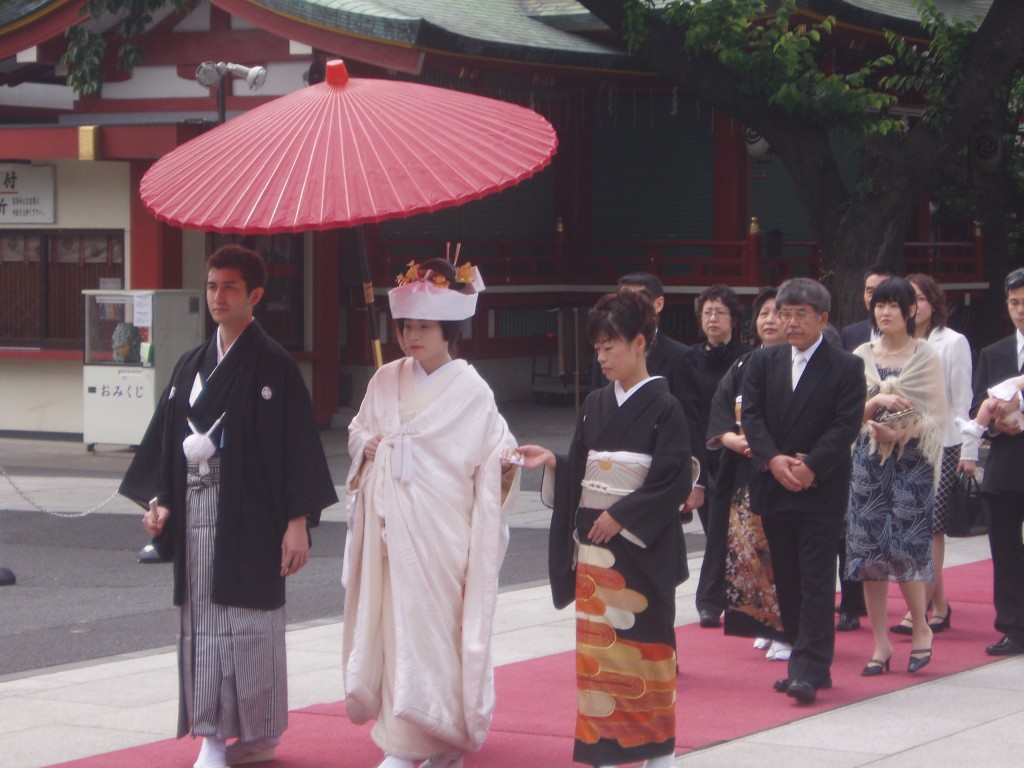
The following is adapted from a paper by John Breen entitled ‘A brief history of Amaterasu in Tokyo’. (For those living in Kyoto, he’ll be giving a talk next Tuesday, Feb 25, on ‘Amaterasu’s progress: on Ise, its priests and patrons in post-war Japan”.)
As with Victorian Britain, Meiji Japan was a time of ‘invented traditions’, not least in Shinto terms, and in the piece below John Breen spells out the development of Shinto weddings.
*****************************************************************************
In May 1900, Crown Prince Yoshihito and Kujō Sadako exchanged vows before Amaterasu in the kashikodokoro [in the Imperial Palace, Tokyo]. This was a first; the event was widely reported in the media and it created a stir. It inspired priests at the Hibiya Daijingū [also dedicated to Amaterasu] to invent, and promote, their own brand of shinzen kekkon, or ‘Shinto’ wedding.
It is a testament, perhaps, to the popular appeal of these weddings that Natsume Sōseki has two characters in his 1913 novel Kōjin (Wayfarer) marry in the Hibiya Daijingū. Statistics for the earliest period are not extant but, by the end of Taisho, the shrine was performing some 1,400 ‘Shinto weddings’ a year.
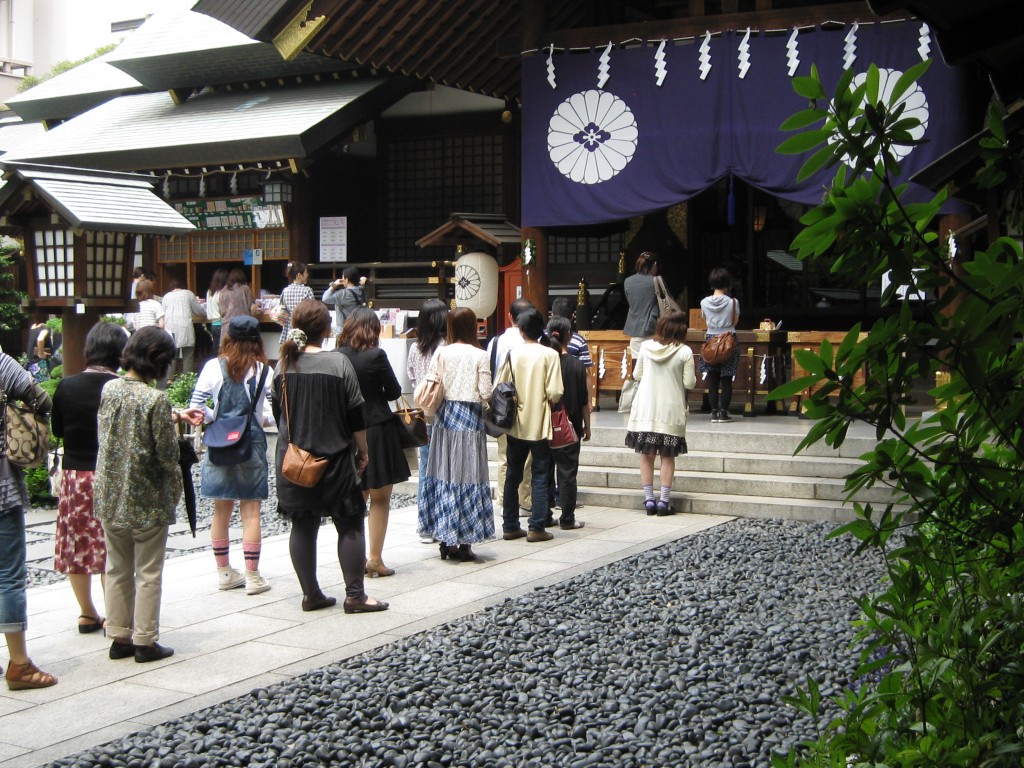
Tokyo Daijingu, successor to Hibiya Daijingu, has acquired a reputation amongst women as a 'power spot' with a special love connection
The vast majority of couples opting for this fashionable new ‘Shinto’ wedding in Taisho and Showa were not, however, of lowly status like Sōseki’s Sano and Sada. Rather, they were the elite of Tokyo society: university professors, military men and government bureaucrats. It was really only in the post-war period that ‘Shinto’ weddings, pioneered by the Hibiya Daijingū, became the norm for the citizens of Tokyo.
What, then, of the fortunes of the Daijingū? Well, the shrine was destroyed in the Tokyo earthquake [1923], and rebuilt as the Tokyo Daijingu in Iidabashi where it stands today. At the start of the 21st century, the shrine appears to be thriving. The shrine’s tradition of weddings has earned it a reputation for working wonders in the realm of en-musubi, that is, aiding the lonely find a lover or a husband or – far less frequently – a wife. Over 90% of visitors to the shrine today are, in fact, young women seeking divine assistance of this sort. The shrine sells a vast array of goods, designed to effect wish-fulfilment.
These qualities have recently earned the shrine widespread recognition as a ‘power spot’. As such, it has featured in magazines and in books, too, like Tōkyō pawa- supotto gaido (Guide to Tokyo Power Spots)… [In a national survey on Japanese religion] 53.8% of university students surveyed were prepared to believe in them. There is huge financial potential here for places like Tōkyō Daijingū, and the shrine is, of course, taking full advantage, but the Shinto establishment is extremely wary. Even as it protests that it understands the appeal of power spots, it admonishes shrines under its control not to ‘drift from tradition’.
It is difficult to say how the ‘Shinto wedding’ fares today at Tōkyō Dajingū given the absence of published data, but it cannot be entirely immune to the trends in society at large. Following a post-war surge, shinzen kekkon have for the last 20 years become a small minority of all weddings performed in Japan. And, of course, Tōkyō Daijingū faces stiff competition in the capital from other shrines, especially the fabulously wealthy Meiji Jingū.
******************************************************
For more about the style and fashion of Shinto wedding dresses, see here.
For more about power spots, see here.
******************************************************
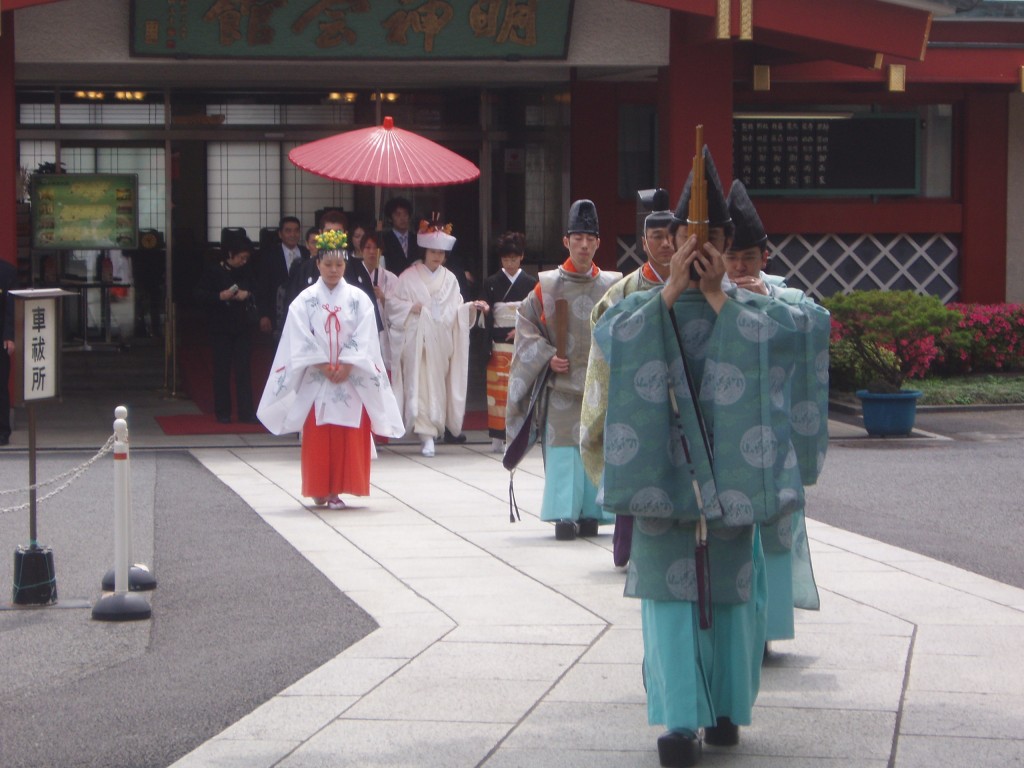
Here comes the bride...
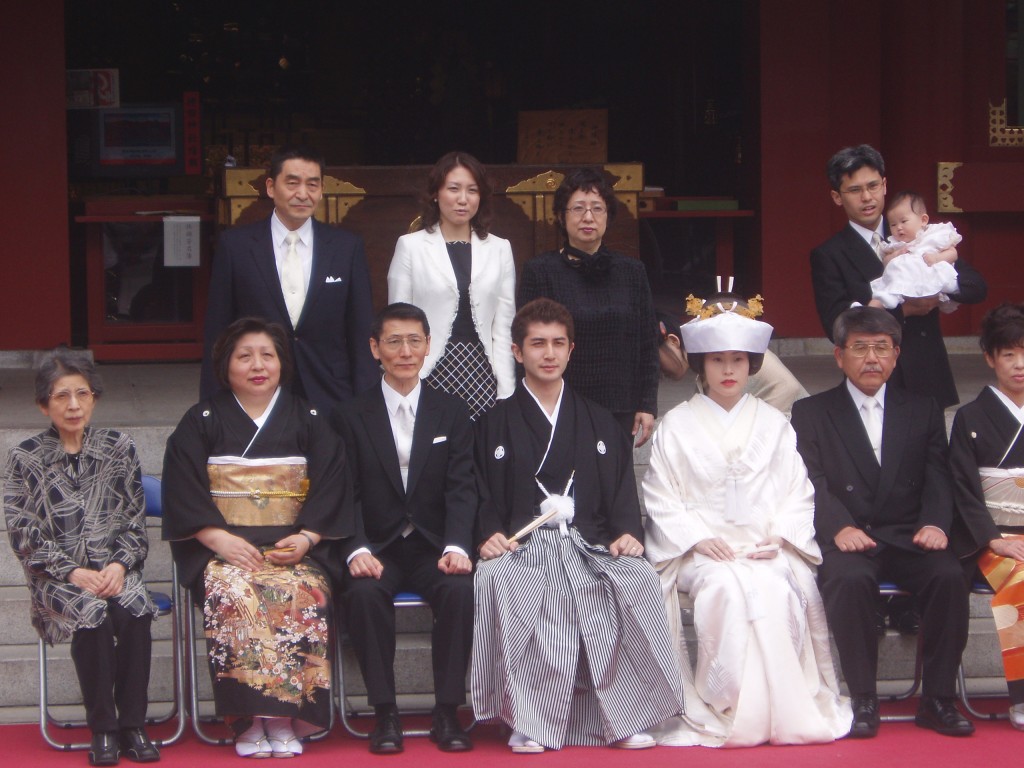
Most important of all, the family photograph
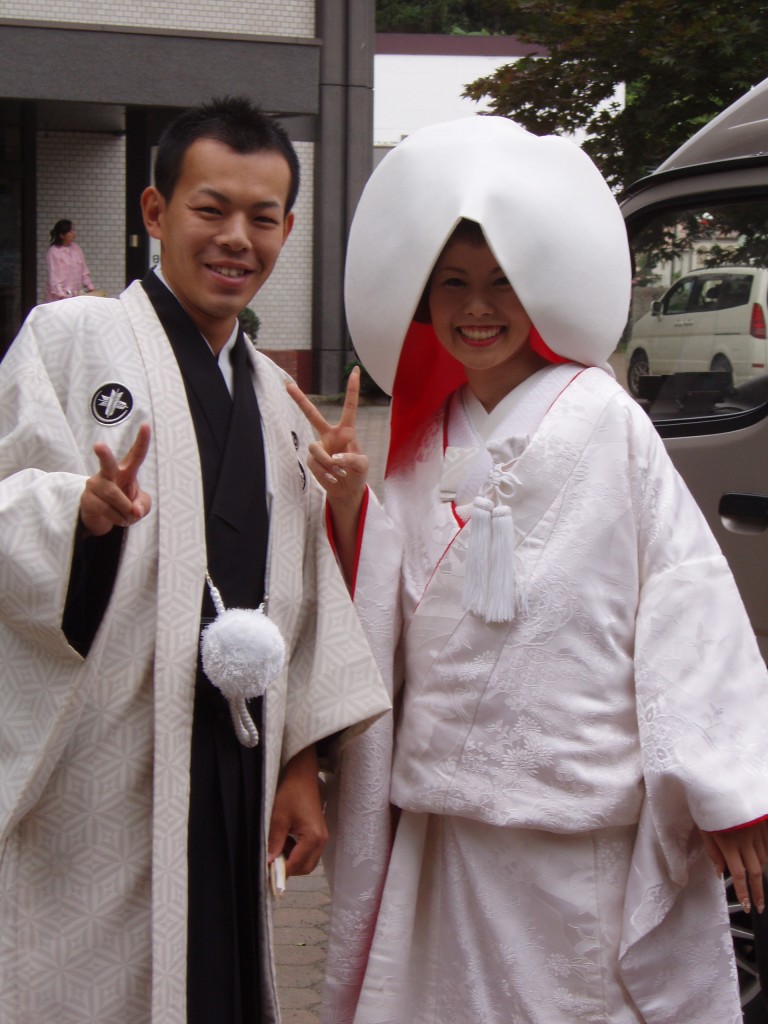
That's one happy couple!

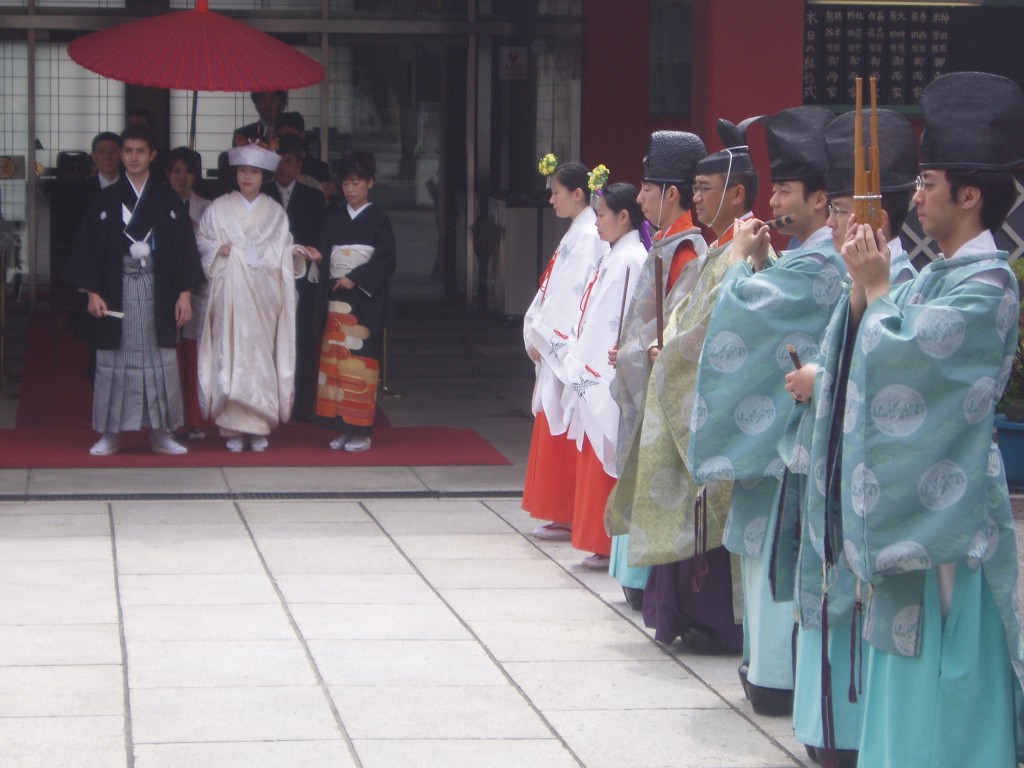
Leave a Reply